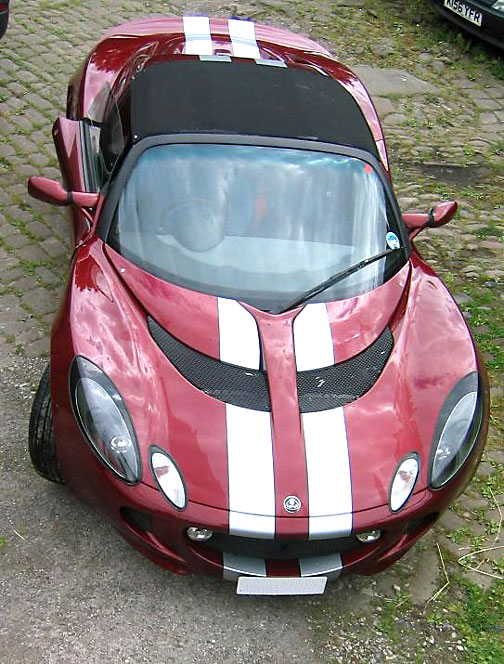
Grill Mesh Conversion for Lotus Elise
Contributed by Jon E.
jonskcollob@hotmail.com
Shropshire, UK
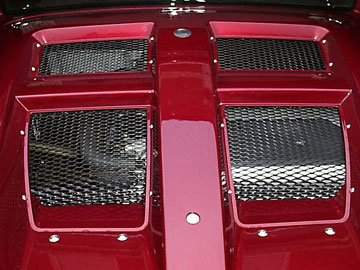
Rear Engine Cover
The holes around the engine cover that you refer to are in fact already in the boot/trunk lid although they are not used in any way to attach the slats.
The slats are actually stuck onto the car via a thick double sided tape. The use of a hair drier helps to separate them from the bodywork. Removal of the slats exposes some curious holes. Once the slats are removed, the cut to size grill mesh can be fitted to the underside of the boot lid. The same screws that are used to hold the front access panels can be used to fit the grill mesh, using the curious holes on the side of the openings. A stainless steel washer and bolt were used to secure the mesh on the back side.
The biggest problem on the boot lid are the four holes that overhang the boot/trunk itself as these have to be waterproofed. Lotus uses some sticky stuff to prevent water from entering the trunk.
These holes need to be drilled and sealed with a waterproof non-silicone sealant.


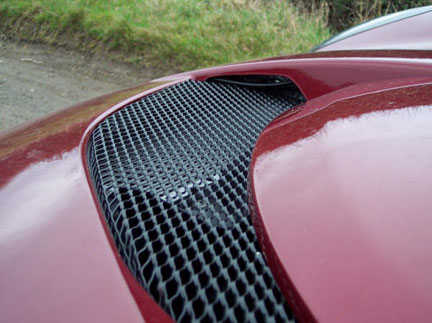
Front Radiator Exits
These can be made using the "Heath Robinson" method. The plastic slats are separated from the access panels. A flat piece of mesh is attached temporarily to the slats using electrical cable ties. The mesh is carefully bent around the slats, with the slats acting as a "mold" for the mesh. After cutting the cable ties away, the mesh is left as a perfectly formed grille that will fit the space where the slats used to sit.
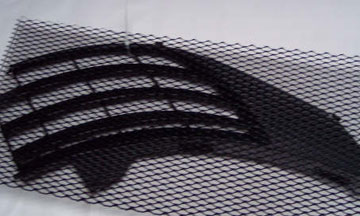
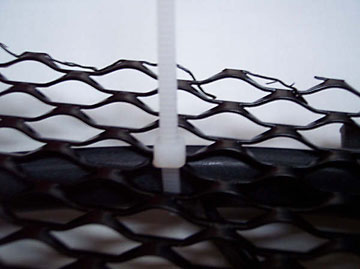
(I think I like the second picture for this purpose explanation.)
A small overhang of mesh is left which can be used to cut tabs similar to those used by the original slats. The mesh can then be fixed in the opening using the same method as the original slats.
1/4 inch double sided tape, similar to the stuff used by Lotus for securing the rear slats over the engine, was carefully placed around the inside front edge of the recess, the bit where the grilles touch at the front. This is there to protect against scratching, not to hold the grille mesh in place.
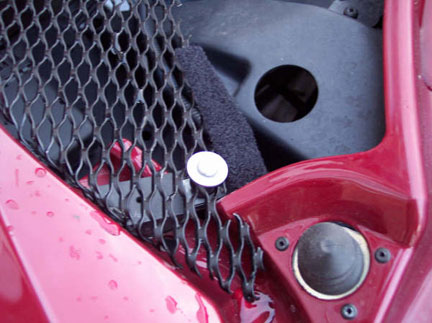
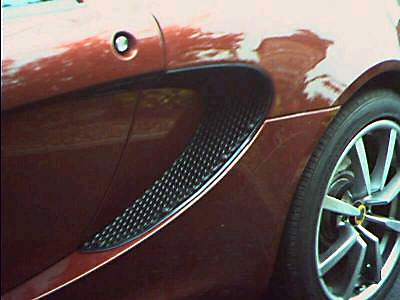
Side Scoop or Vent
The rear wheels and arch liners are removed, allowing access to the two bolts required to remove the side slats. Once off the car, the same method can be used as on the front slats over the radiator exit. The original plastic is used to form the mesh.
First remove the slats by cutting them away from the surround molding. Finish the remaining surround piece of plastic in preparation for attaching the mesh.
Carefully bend the mesh to fit the shape of the side scoops. The mesh is attached to the outside edge of the original plastic vent using closed end trim panel rivets but could also be secured with the adhesive.

To enable a flush fit, use the same screw fitting to attach the mesh to the original plastic molding.
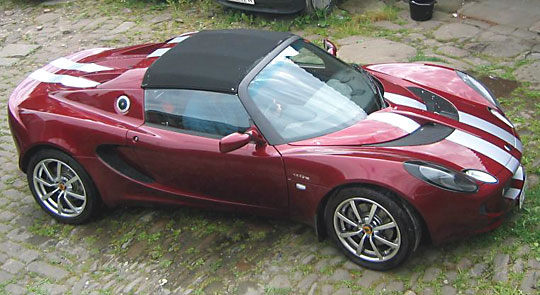
Front Radiator Intake
The flat mesh is cut slightly larger than the opening. All of the material is trimmed away to the size of the original opening except pins or tabs that are in the same location as the original grille. Quarter inch rubber grommets are inserted in the holes in the front opening and the mesh pins are inserted. The mesh is trimmed slightly at the top so the original fixing clips can be used.
Basically, the front mesh mimics the original slats and mount the same way. This was the easiest grille installation of all.
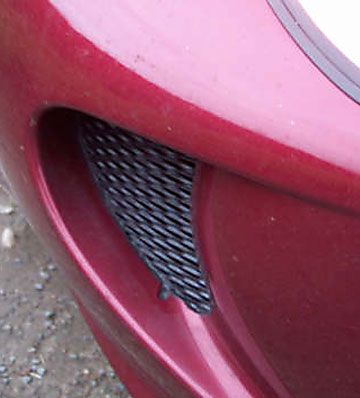
Small Side Grille Openings
These are the openings in front of the oil coolers in the Federal car.
The small front side slats can be removed via the front indicators. Be very careful removing the indicators as these are a weak point on the Elise and have caused many problems to UK Elise owners. The plastic tab at the top inside of the indicator is not flexible and will break off. The slats are attached with a single torqx screw. Once removed pieces of grill mesh can be cut to size and placed in the hole that is left. They are fixed via the same adhesive as the top front grills.
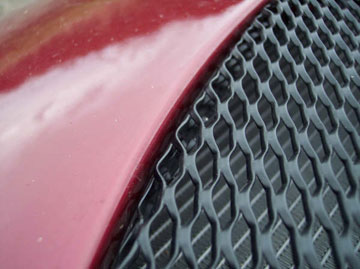
Material
Jon E. used a flat aluminium grill mesh painted black. It is also known as expanded metal mesh and comes in many shapes and opening sizes. The original Elise used steel mesh and it used to rust.
It also helps to take a wax rubbing of the opening when cutting the various pieces. Place a large piece of paper against the opening and color across it with wax Crayons. This leaves the impression of the opening and facilitates the cutting of the mesh.
The question is if stainless steel woven or welded wire mesh can be used and if it will hold its shape, especially with people pushing and prodding.
Other Grille Replacement Efforts
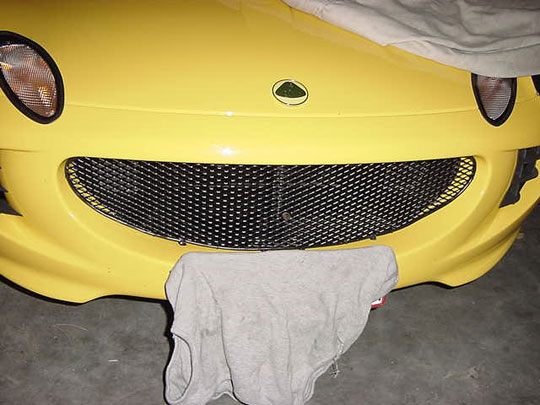
Wim Van Beeck also replaced his front grille with expanded mesh.
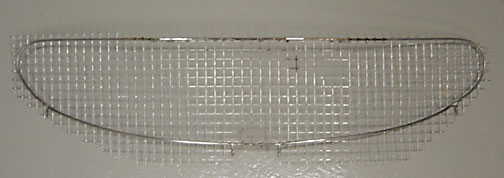
Kiyoshi also created a wire mesh grille for his Elise. He first made a frame out of 1/8 inch steel rod and then soldered the wire mesh to the opening. By putting pins at the bottom and cutting away wire mesh at the top, he was able to use the mounting method of the original grille. The grille is patterned after the grilles in the original Lotus Elan.
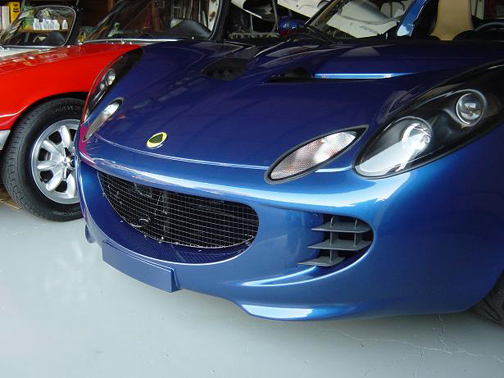
Final front grille on Kiyoshi's car. (The picture shows some photography artifacts and does not depict the final appearance.)
